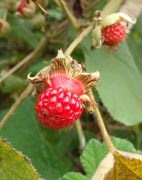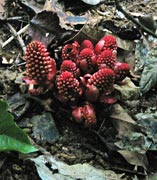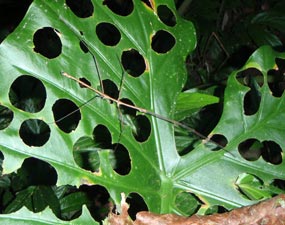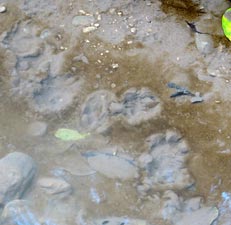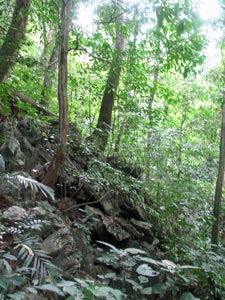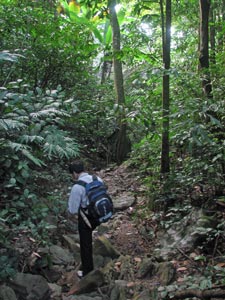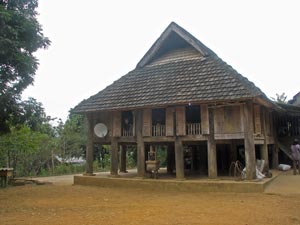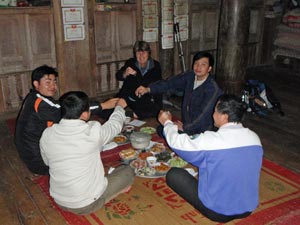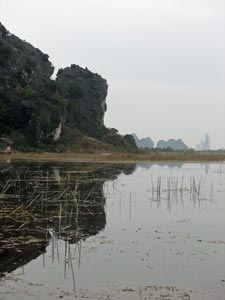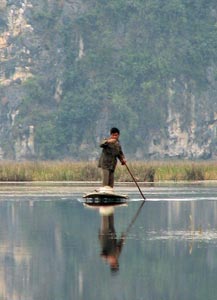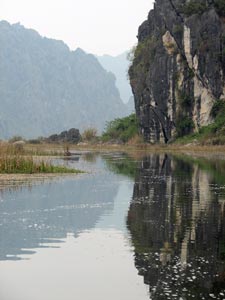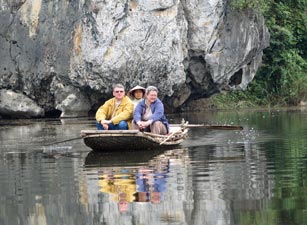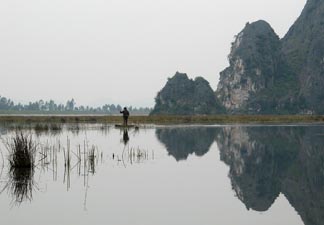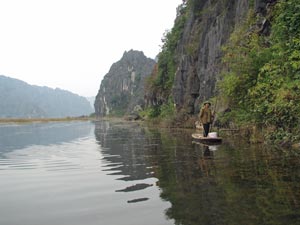We were greeted by yet another cold grey Hanoi sky when Mr Linh and the driver picked us up at 7am for the 3-hour journey south to Cuc Phuong National Park. Still tired after our late night out taking in the mayhem of combined Christmas and football victory over Thailand for the first time in 10 years celebrations in Hanoi, we dozed on and off through the quasi-urbanised flat lands surrounding the city, as the new highway passed through a strange landscape of massive billboards on metal or concrete towers advertising all manner of commerce. How bizaare to see these symbols of rampant capitalism in a communist country - since arriving, I have had much trouble equating the reality I see here with the political system. My musings ceased as we neared Ninh Binh and its naturally vertical landscape of karst towers and outcrops - much more appealing.
An hour later we arrived at the entry to Cuc Phuong, Vietnam's oldest National Park, established by Uncle Ho in 1962 as a safe haven for endangered primates. Our first stop was the Endangered Animal Rescue Centre, currently home to 15 species of langur, loris and gibbon that were rescued from poachers and traffickers and are now part of a captive breeding program aimed at reintroducing these species back into the wild. The park ranger who explained the aims of the program to us, Mr Viet, was also the local guide for our 4-hour walk in the National Park itself.

